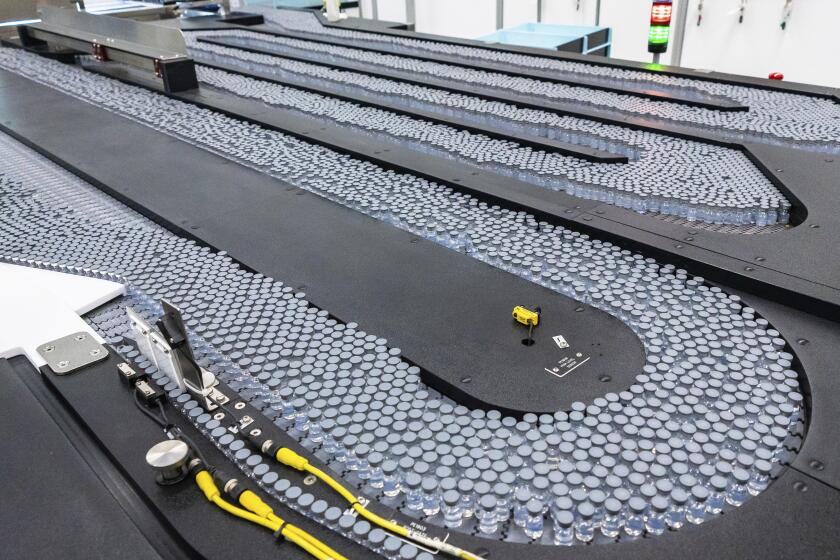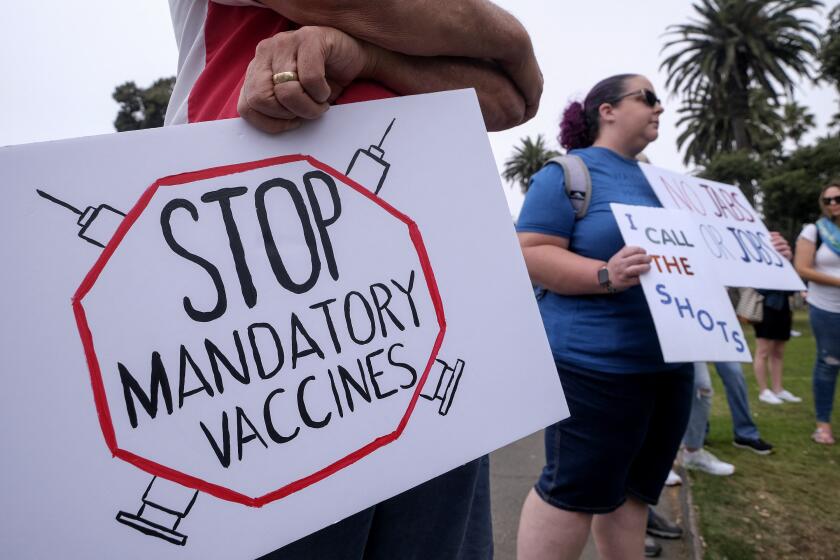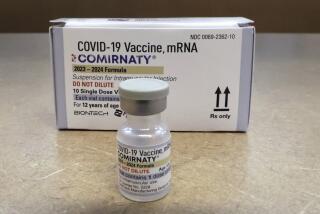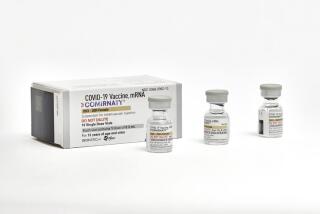U.S. renews push for COVID boosters as data show they protect
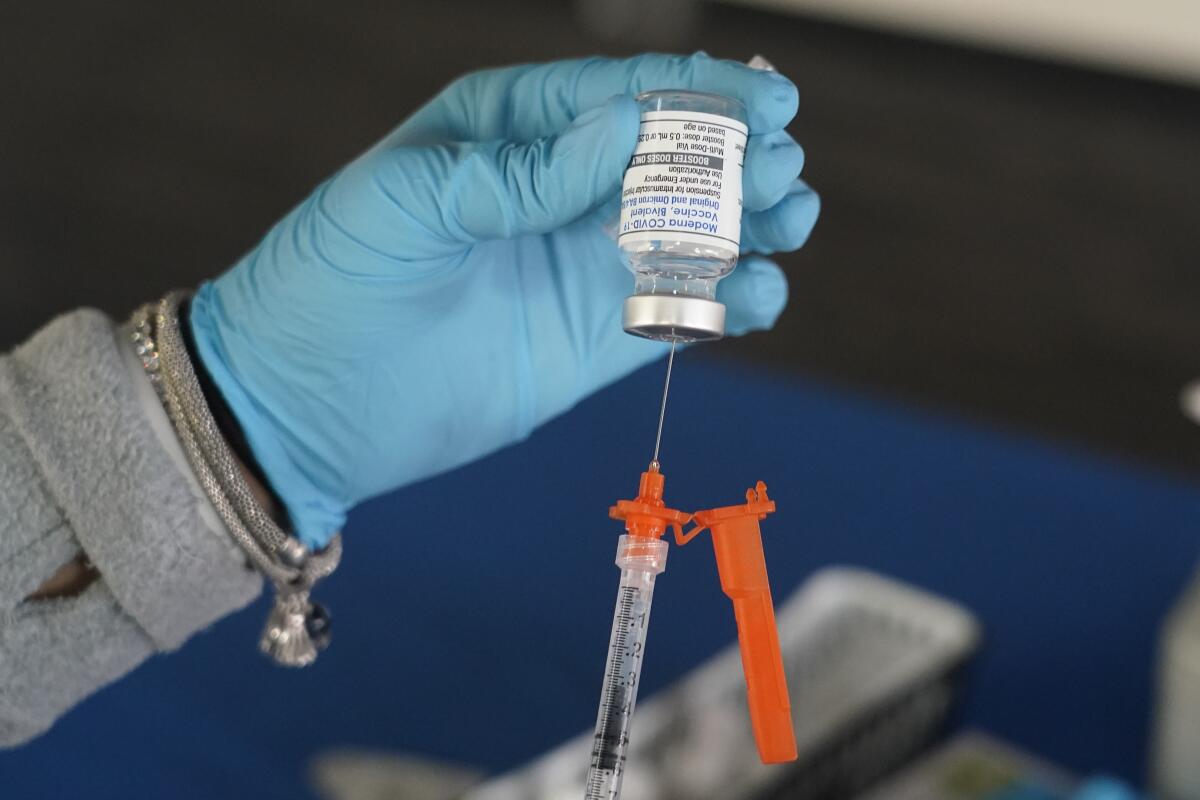
- Share via
Americans who got updated COVID-19 booster shots are better protected against symptomatic infection than those who haven’t — at least for now, U.S. health officials said Tuesday.
Updated boosters rolled out by Pfizer and Moderna in September have been a hard sell for vaccine-weary Americans. Only about 13% of U.S. adults so far have gotten a “bivalent” shot that targets the BA.5 Omicron subvariant as well as the original coronavirus strain.
On Tuesday, White House officials announced a renewed push for more Americans to get the latest shots.
In the first look at the new shots’ real-world effectiveness, the Centers for Disease Control and Prevention tracked people with COVID-like symptoms who sought testing at drugstores around the country between September and early November. Researchers compared the vaccination status of those who wound up having COVID-19 with those who didn’t.
Compared to people who had at least two doses of the original version of the booster shot, those who got the new Omicron-targeting booster had greater protection against symptomatic infection — as much as 56% more, depending on how many prior vaccinations someone had, how long ago and their age, the CDC concluded.
That 56% figure applied to adults ages 18 to 49 who’d gone at least eight months since their last dose of vaccine, according to a report published Tuesday in the CDC’s Morbidity and Mortality Weekly Report. If their last dose was within the past 2 to 3 months, the relative vaccine effectiveness of the new booster was 30%.
The updated bivalent COVID-19 booster shots are available at more than 1,500 sites in Los Angeles County. Here’s how to get one.
For adults 50 to 64, the new shot increased protection by 31% among those who were recently boosted and by 48% among those whose last dose was at least eight months earlier. For seniors 65 and up, the figures were 28% and 43%, according to the report.
People who saw the greatest benefit were those who’d never had a prior booster, said CDC epidemiologist Ruth Link-Gelles, who led the study. But even people who got a summertime booster of the original vaccine before seeking the new fall formula got more protection than if they’d skipped this latest shot, she said.
“We think about it as the additional benefit or incremental benefit of getting one more dose, and in this case that one more dose is a bivalent,” Link-Gelles said.
Americans who still aren’t fully vaccinated against COVID-19 probably have some immunity from a past infection. They may not be so dangerous anymore.
The BA.5 strain targeted by the updated boosters was the dominant strain in the U.S. until late October. The original COVID-19 vaccines have offered strong protection against severe disease and death no matter the variant, but protection against mild infection has proved temporary.
The CDC’s analysis tracked only the first few months of the new boosters’ use, so it’s too early to know how long the added protection against symptomatic infection lasts.
But “certainly as we enter the holiday season, personally I would want the most possible protection if I’m seeing my parents and grandparents,” Link-Gelles said. “Protection against infection there is going to be really helpful, because you potentially would stop yourself from getting a grandparent or other loved one sick.”
To that end, the Biden administration announced a six-week campaign urging people — especially seniors — to get the boosters, saying the shots could save lives as Americans gather for the holidays.
Pfizer said its updated COVID-19 booster may offer some protection against newly emerging Omicron subvariants, even though it’s not an exact match.
Even protection against severe illness slipped when BA.5 was dominant, the reason health authorities have strongly urged older adults and others at high risk not to skip the new booster.
Adding to the uncertainty, new coronavirus variants are on the rise. A subvariant called BQ.1 now accounts for 25.5% of the specimens circulating in the U.S., and BQ.1.1 makes up another 24.2%, the CDC estimates. Both are descendants of BA.5, whose share has dropped to 24%.
Pfizer and Moderna have released lab test results showing that getting an updated booster revs up people’s levels of virus-fighting antibodies, including against BA.5. The companies point to preliminary antibody evidence that the new shots may offer at least some protection against the even newer Omicron subtypes as well, despite not being an exact match.
Times staff writer Karen Kaplan contributed to this report.
